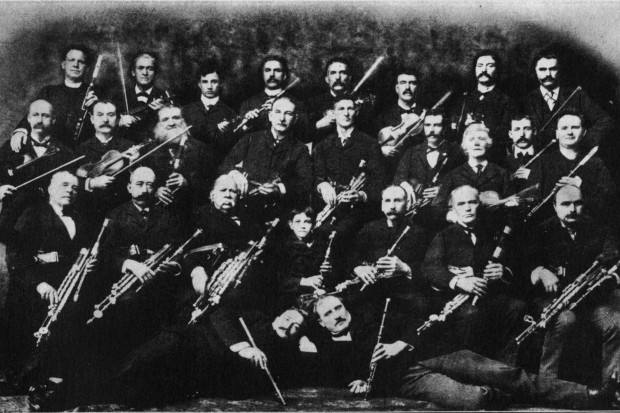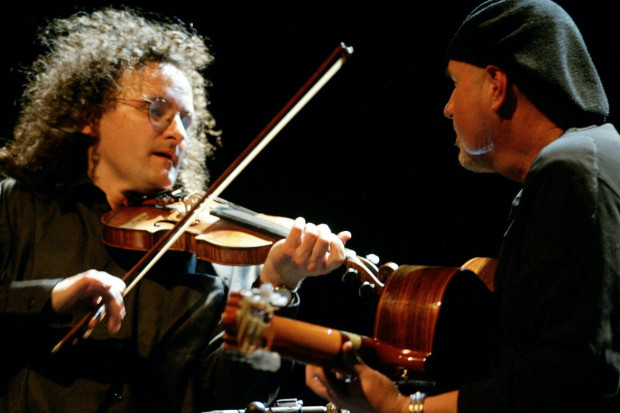Compact Discord
There is a notorious and possibly apocryphal story concerning a now well-known Irish musician who recorded his debut album for a Belfast label. Although a few copies were distributed to reviewers, on asking for his own he was rebuffed with a simple ‘It’s not Christmas every day, you know.’ Ireland’s traditional music is littered with tales like this, constituting a semi-secret history of dissent between musicians and record companies. As long ago as 1938, as Caoimhín MacAoidh documents in Between the Jigs and Reels, the fiddler Neillidh Boyle left Regal Zonophone because ‘… difficulties between the two parties concerning the distribution of his recordings and the associated royalties had made working relations impossible’. Boyle never made another commercial recording and many other traditional musicians have since discovered that contracts do not necessarily engender financial reward.
While some such contracts may have been inherently shady, mirroring then worldwide record industry practice, the musicians’ poor monetary return was (and still remains) more a reflection of the limited market for traditional music both within and outside Ireland. The Dubliners’ single, ‘Seven Drunken Nights’, may have sold several hundred thousand copies across Europe in 1967, but this number was probably greater than the entire combined sales that year of all other traditional musicians. In recent times too, sales of singles have plummeted to the extent that, for example, when once it was necessary to sell a couple of hundred thousand copies to top the UK charts for a week, nowadays the pinnacle can be reached with a mere 20,000. Of course, when The Dubliners were at the peak of their international fame, the record-buying public did not have the alternative temptations of computer games, DVDs, video tapes, mobile telephones and other gizmos to purchase.
In consequence, the international recording industry has undergone many changes during the last decade, which saw companies amalgamate and diversify, spreading their influence across as many available media as possible and cutting their music rosters to optimise their profits. The number of Irish traditional acts currently signed to major labels has shrunk accordingly (the few examples which spring to mind are Altan, The Chieftains, Christy Moore and Clannad) and, despite current international interest in the dubious concept of ‘Celtic’ music (in part as a component of the equally dubious ‘World’ music), the chances of this number increasing are less than slim. Equally, fashions and tastes change, so while once African music was for a time the ‘World’ flavour of the month, currently Cuban music is most popular with record buyers. So, it is possible, if interest wanes, that Irish traditional music sales may decline internationally in the future.
Effectively, this has left Irish musicians with two potential choices in terms of their own desire to record: either to hope to be signed by one of the smaller specialist labels, or to go it alone and release their own compact discs. While others, of course, may simply dismiss the recording process altogether. Yet the condition of many of the specialist labels gives grounds for concern about their own survival.
Ireland’s oldest two, Gael-Linn and Claddagh, barely release half a dozen albums a year while, since its takeover, Ossian seems to have returned to its prime function as a publishing company. Mulligan is simply content to reissue a portion of its back catalogue, a stance echoed in part by Tara (which still releases the occasional new album). Frank Harte’s recent My Name is Napoleon Bonaparte double CD was only Hummingbird’s 27th album release in nine years, while Outlet has issued a mere trickle of new recordings in recent times. Ritz/Grapevine is bolstered by Sharon Shannon’s sales and Dara/Dolphin is in a similar position thanks to Mary Black while both, of course, have extensive MoR/Country and Irish rosters. Connemara’s Cló Iar-Chonnachta does maintain an impressive release schedule and is now virtually the only label regularly issuing albums of unaccompanied singing. As far as I am aware there is no longer a single international record company with offices in Ireland when once Warner, Polydor and others had bases in Dublin.
In the USA, Green Linnet is reportedly struggling to survive recent financial problems while Shanachie is fortunate to be able to support its Irish catalogue thanks to the likes of Solas, Danú and Karan Casey. Rounder seemingly now only issues archive compilations, estimable though most of these may be. Elsewhere, London’s Topic label, once a prolific recorder of Irish musicians, now only releases archive material and a small fragment of its massive back catalogue, though its recent signing of the Belfast fingerstyle guitarist, Colin Reid, may indicate a change of policy. The only other traditional releases issued on UK labels are few in number and include Proper Records (Ron Kavana’s own releases and archive compilations), Globestyle (again Ron Kavana’s compilations), Chris Newman and Máire Ní Chathasaigh’s own Old Bridge Music and Scottish independent labels such as Robin Morton’s Temple Records, KRL/Lochshore and Footstompin’ Records.
Despite this, however, each month sees a plethora of new traditional releases in Ireland. May’s home-grown crop alone included CDs by Beginish, Davy Spillane and Kevin Glackin, Emer Mayock, Malachy Bourke, Peter and Angelina Carberry, North Cregg, Carmel Gunning, Cormac Breatnach and Martin Dunlea, and Ann Mulqueen, augmented by a slew of re-releases from the UK and USA. Remarkably, only three of the above-named bore the imprint of a long-standing record company (Carmel Gunning on Sligo’s Sound Records, North Cregg on Peter Pandula’s Magnetic Music, now based in Doolin, and Anne Mulqueen on Cló Iar-Chonnachta). Almost all the other albums fell into the category of own-label releases while the issue of recently discovered tapes of the late Mick Dwyer, again issued independently, enhanced the rich vein of commercially available archive material.
On the surface, it is a situation akin to the rise of punk rock in England in the mid-1970s whose basic ethos was to raise two fingers to the establishment while simultaneously demonstrating that anyone could make a record (albeit of often appalling quality). Yet, while echoing this individualism, the current Irish situation is more in tune with the fragmentation that characterises much of contemporary life under capitalism in which e-commerce has spawned a myriad of home-based ‘industries’. Nevertheless, the outcome is, in one sense, the same as the punk revolution (albeit without the fanzines), as record stores struggle to find space for an endless torrent of new independent releases.
Sadly, the record buyer has little assistance in determining which new albums are worth purchasing, other than word of mouth or reliance on a musician’s existing reputation (though many independent releases are often debut recordings). There is little chance of hearing anything from a new album unless the potential buyer lives in the catchment area of a local radio station whose output includes regular traditional music programmes or catches one of the few regular shows broadcast nationally. Irish newspapers print few CD reviews (and largely focus on ‘major’ names) while both the Irish Music magazine and Hot Press cannot hope to keep pace with all the new releases.
The situation is even worse in Northern Ireland where there are few specialist record shops and hardly any broadcasting outlets for traditional music. In England and Scotland, specialist music magazines, such as fRoots, Songlines and Dirty Linen, have an internationalist stance regarding traditional music and struggle to cope with what one editor described to me as ‘CD overload’. As a reviewer myself, I am very aware of the limited opportunities available in these magazines for reviews of Irish CDs as they fight for space with releases from all over the globe. Additionally, even when a review can be placed, the magazines naturally insist that the album must be available from a UK distributor. One alternative is Rod Stradling’s Internet-based Music Traditions magazine (www.mustrad.org.uk), but this is less tempting for reviewers since no fees are paid, though it does offer the welcome opportunity for expanded critical assessment.
Another factor influencing record-buying is the price of CDs, which, though low in the USA, is unnaturally high in both Ireland and the UK (where even Parliamentary Committees have been unable to persuade the industry to reduce its prices). Though chain stores may discount prices of ‘chart’ CDs, few traditional albums enter this often self-determined category, thus buyers usually end up paying the full retail price, a disincentive in terms of experimentation.
Distribution of new releases both within and outside Ireland raises further problems. In Ireland, musicians must decide whether to make use of the major distributors, and balance facilities offered against a reduction in profit, or to oversee distribution personally. The latter necessarily requires marketing and communication skills (which most of the general public, let alone musicians, do not have) and, of course, a great deal of time. Musicians who wish to use overseas distributors will also usually need a different company for each country. This applies even to musicians signed to a regular label, and such a multiplicity of distributors was specifically identified as a barrier to international success by an Irish professional musician in a recent conversation with the author. Equally, the only traditional band to enjoy major international success while issuing albums on its own label, Dervish, has to spend considerable time ensuring that its records are properly distributed.
Lastly, whilst most record companies have limited advertising budgets, many musicians will simply not be able to afford such a luxury, especially those who would consider themselves amateur as opposed to semi-professional in status. Those who choose to advertise need also to weigh up whether the relatively small circulation of the available printed media is actually cost-effective. The alternative again is to use the Internet and there does here seem to be an opportunity for cooperation, perhaps through the creation of a new website specifically devoted to the marketing and sales of traditional music, run collectively by the musicians involved or under the aegis of a new or existing umbrella organisation.
As a consequence, and since a relatively small minority of musicians tour regularly (a major marketing opportunity), it is highly unlikely that many independent releases sell enough to balance the books. Of course, there are always exceptions, such as Tommy Peoples’ album, The Quiet Glen, which has sold several thousand copies, but Tommy is an exceptional fiddler and one of the few living traditional musicians to have approached cult status.
However, the worth of an album is not always equitable to its sales figures, as the worlds of rock and pop habitually demonstrate. While a key criterion is always the listener’s satisfaction, ultimately, the question is whether any traditional CD actually enhances the tradition itself. Unarguably, releases that rescue (and, possibly, thereby revive) little-known songs and tunes are more likely to be of value to the tradition than a new album full of familiar jigs and reels, enjoyable though the latter might be. In one sense, albums such as The McNamara Family’s Leitrim’s Hidden Treasure or Gerdie Commane and Joe Ryan’s Two Gentlemen of Clare Music are historical documents, recording regional repertoires at varying degrees of risk of extinction. However, it should not be forgotten that many songs and tunes have disappeared from the tradition simply because they were not good enough to survive in the first place or lost contemporaneity. Fortunately, neither of the above releases contains such material.
Advocates of Tommy Potts’ ‘hidden note’ theory might argue that there is nothing wrong in yet another recording of ‘Saddle the Pony’ or ‘Toss the Feathers’, and quite often they are right. The problem is that all too frequently they are not. The advent of digital recording has ensured that few releases now suffer from poor sound quality, and the days of records that appeared to have been recorded in a swimming bath or carpet warehouse are long gone. However, an efficient sound engineer is still essential, especially to prevent imbalance in the mix — the most common example being the excessive prominence of accompanists. Similarly, the technical standard of the overwhelming majority of musicians appearing on CDs is awesome, but the crux of the matter is whether they are equally adept in expressing their music.
In the course of researching The Rough Guide to Irish Music I listened to more than two thousand albums, many of these being independently produced. During this extensive phase of aural saturation I identified two failings evident, though not necessarily simultaneously, in a large number of independent releases. The first applies fundamentally to ensemble recordings. I would not go so far as Tony MacMahon, who regards much contemporary ensemble playing as ‘boring, repetitive, mechanical cavorting and jostling its way along the entertainment superhighway in search of a comfortable stall in the market-place’. However, there are too many albums released by bands who are little more than heads-down, no nonsense, churn-out-the-reels-merchants (the Status Quos of traditional music). This might be fine in a crowded, city-centre pub where there is little scope for sensitivity, but it does not bear repeated listening on record. Equally, a substantial number of these groups intersperse their instrumentals with songs that are inappropriate in context, mawkish or just plain poor.
The fact that too many ensembles seem to want to sound like The Bothy Band (or even The Pogues) illustrates the second failing, the emulation factor. This also features prominently in many solo recordings. Ireland’s musical tradition is founded on the transmission of tunes from one musician to another, so, obviously, the way one musician plays a tune will also have an influence on its inheritor. Unfortunately, too many musicians have taken this one stage futher in their own recordings by not just playing a tune associated with, say, John Doherty or Tommy Peoples, but trying to simulate these fiddlers’ original recordings. This strikes me as both a fundamentally flawed and redundant actiivity, but it has not deterred a host of imitators
In times past, some of these independent recordings might have been descibed as ‘vanity’ releases, a deeply pejorative term suggesting little more than self-interest, which, in many cases, the records amply demonstrated. A few of today’s CDs, perhaps only stocked behind the bar of the musician’s local pub, now fit into this category, but perhaps we need a new term to describe some of the independent relesases (produced in much larger quantities) that add nothing to the tradition and lie in dust-covered stacks in record shops’ storerooms or unplayed on music lovers’ shelves. For want of a better alternative, I would offer NOPE recordings (‘no purchaser enjoyment’).
Notes
1. Caoimhín MacAoidh, Between the Jigs and Reels (Drumlin Publications, 1994) p. 131.
2. For the purposes of this article the term ‘traditional music’ is being defined as broadly as possible to include musicians and groups who would define themselves as traditional musicians and those who would not but still draw strongly from the tradition.
3. Internationally, one might also include Cherish the Ladies.
4. As a sign of changing times, one of my local North London Irish pubs has recently been stripped, redesigned and re-opened as a Salsa bar.
5. I might have also referred to releases by RTÉ and CCÉ here, but both now rarely release albums consisting of new recordings with the exception of the former’s Réalta series compiling entries to the RnaG competition.
6. A more contemporary parallel could be drawn with record shops specialising in the various forms of dance music where a multitude of independently-released 12” singles vie for space in the racks.
7. Most Irish record labels also act as distributors for independent products, although there are a few alternatives such as Open Ear Productions.
8. Tony MacMahon, ‘Music of the powerful and majestic past’ in Fintan Vallely et al. (eds) Crosbhealach an Cheoil, p. 117.
9. I use the term ‘solo’ very loosely, since, with the notable exception of uilleann pipers, most such recordings actually feature accompanists.
Published on 1 July 2001
Geoff Wallis is a freelance writer on music and travel and co-author of The Rough Guides to Irish music, Dublin and Ireland.














